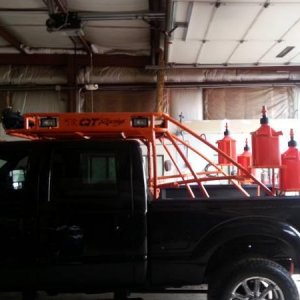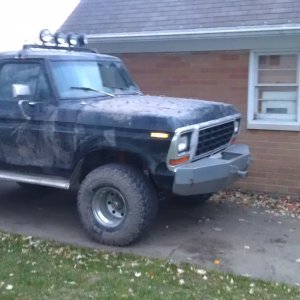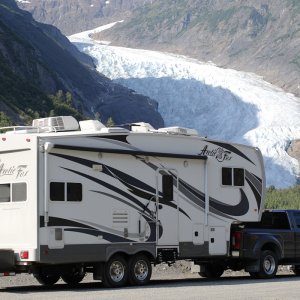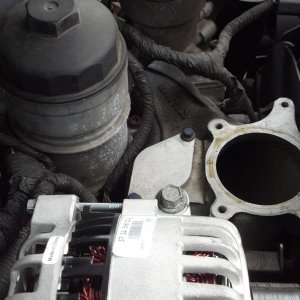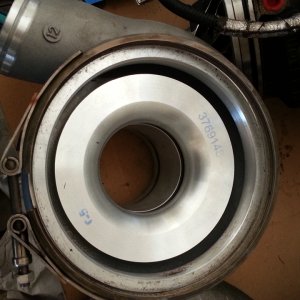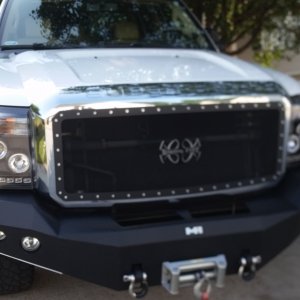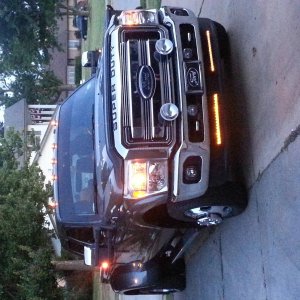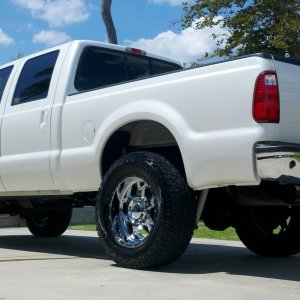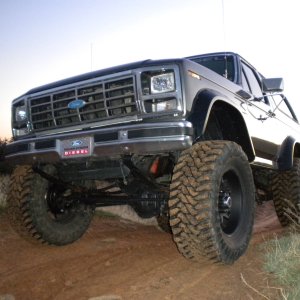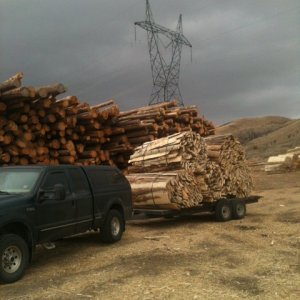the real worry on a 7.3L head is that removing too much material can get into areas of more porous metal. the swirling is not really that important as the application is forced induction and the fuel is injected directly into the cylinder. happy porting!!
Man, since port swirl and flow doesn't play any role of significance in a forced induction app, think of the $3500 i wasted in porting and head work that I could've done myself in my garage with a few carbides.... :doh:
How about this..... we take what you just said, re-do it using what I like to call "the right way" and see where we end up?
Just a little refresher:
There are different levels of swirl found in gasoline engines depending on whether it is a stock, mild or more wild application. On the flow bench you will often see that porting cylinder heads for more cfm causes the swirl percentage to drop. This happens because you are reshaping the port’s design for more airflow and most of the time the head porter is trying to straighten the port. Air tends to flow better with less bends and restrictions On a flow bench, swirl is measured with a swirl meter which will, in turn, be measured in rpm. In a typical small block Chevy, swirl ranges anywhere from 700 to 1,400 rpm, in accordance with how much lift is measured at the valve. This generally takes place from approximately .002˝ to .007˝ of valve lift.
Now in a diesel cylinder head, the swirl from the intake port entering the combustion chamber can be as much as three times the rpm of gasoline cylinder heads. Keep in mind that because the valve lift in diesel engines isn’t very high, we know the biggest differences will be that the diesel cylinder head is producing more swirl and doing it faster.
Why does this all really matter? Think of it this way, if swirl is helping to fill the ports of both the gasoline and diesel engines, why does the diesel demand more? In a gasoline engine, once the intake valve is closed and the swirling stops, the piston is starting to travel up the bore for the compression stroke. The mixture is just being compressed waiting to be ignited by the spark plug. In a diesel engine, when the intake valve closes and the piston starts the compression stroke, the swirling continues! Yes, as the piston travels further up the bore, the air continues to swirl faster and faster in the cylinder and the piston bowl. It not only moves in a circular motion, but also a spiraling motion. The reason for this is to light off the diesel fuel.
Remember, diesel is injected into the cylinder in very fine atomized droplets, an action that occurs at XXX degrees before top dead center. In a gasoline engine, on the compression stroke you have air and fuel being compressed in the cylinder. In a diesel, you just have air that is being compressed. So, when the piston is traveling up the bore in a diesel engine, cylinder pressure is increasing rapidly. When diesel fuel enters the combustion chamber, it has to light off. The more the pressure rises, the harder it is for the diesel fuel to ignite. Pressure tends to keep the diesel droplets in a suspended state. So, the swirling motion lets the diesel droplets that enter the cylinder cling to the bowl to aid in igniting the combustion
Most people think that port swirl in a diesel is used to aid in turbo lag. But actually, the turbo is used for the purposes of forced induction. This, in turn, puts more air in the cylinder. When swirl is taken away the power will go down.

